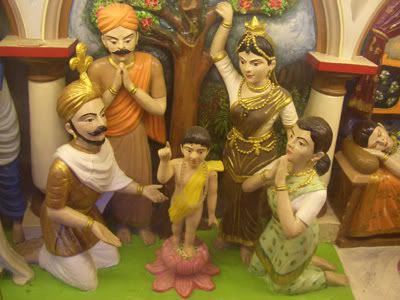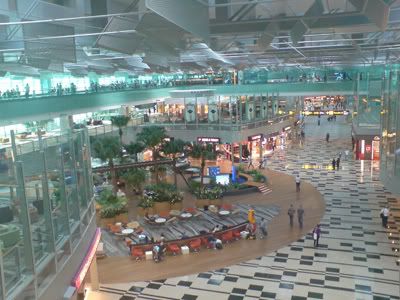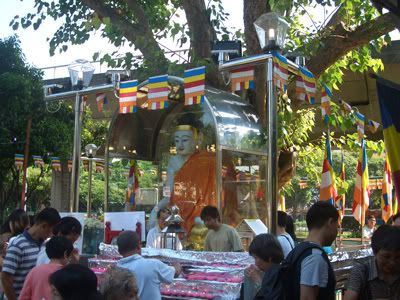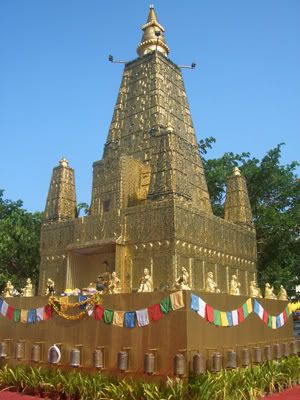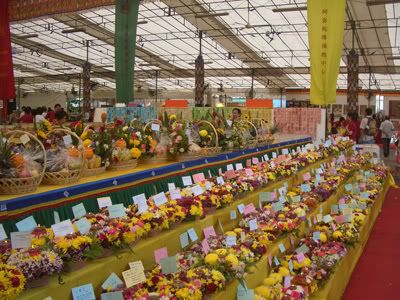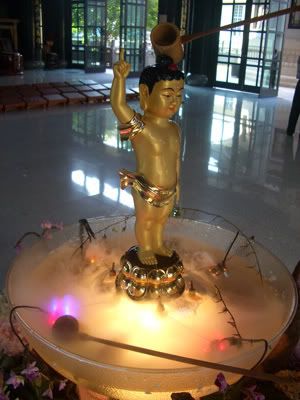1) Mid-2002: Cameron Highlands, Malaysia
2) End-2003: Ipoh, Malaysia
3) End-2004: Bekok, Malaysia
Since graduation and because of the nature of my work, I am unable to attend retreat on a yearly basis as I have in the past. This time round I am back in Singapore for a longer period and it just nice coincides with a number of retreats around the Vesak month. When I saw the Pa Auk Retreats organised by the PMC, I feel this is the one which I should go for.
There is quite a overwhelming application for the retreat with hundreds of yogis participating. The ratio of ladies is to guys is almost three is to one. In preparing for this retreat, I tried to make it a point of meditating for 30 minutes daily. Two days before the retreat, I adjusted my sleep pattern by waking up at 5.30am on one of the day and 4.45am on the next day. You will see from the timetable below to understand why it is so important to adjust our sleep patterns. I normally wake at 7am, but the retreat will require all yogis to wake at 4.30am.
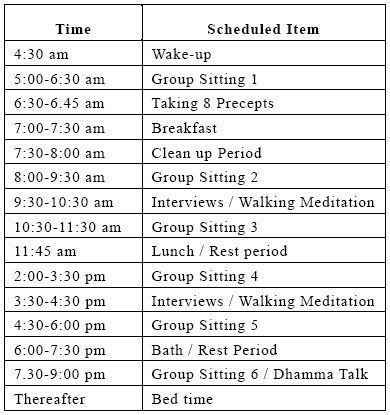
With the large number of meditation sittings, it is also essential to be prepared for the long hours of sitting on the floor. I tried my best to practise 30 mins daily for it.
It is actually a healthy habit to sleep early and wake early. This is in tune with our natural body clock and allow our body to rest fully at certain times of the day. Just that our urban lifestyle has made it topsy turvy with us sleeping late and waking late; and it also explains the large number of cancer occurances amongst urban dwellers.
Two meals will be provided each day: Breakfast and Lunch. We don't actually feel hungry as night as much energy is conserved in the retreat setting. How do we conserve energy? Firstly, we have to observe noble silence. Secondly, we do not attempt much physical activities like running, walking around. Thirdly, our mind do not wander around thinking of this, that, past or future.
Our object of meditation is observing our breathe. It is the simplest method, common to all meditation practice and one that has the power to relax ourselves. I have been train in the breathe meditation (anapanasati in pali) for a few years now so I am quite comfortable with it. The meditation teacher also taught us yoga to relax our body and make it supple for meditation practice.
With all the physical and mental preparations in place, I went down to the retreat grounds at Shuang Lin Temple on the 20th May (Tuesday). We are supposed to check in at 4.30pm.
From some photos which I saw online of the temple, it looks really beautiful. So I decide to take a few myself.
Here are the main entrance gates to the temple.
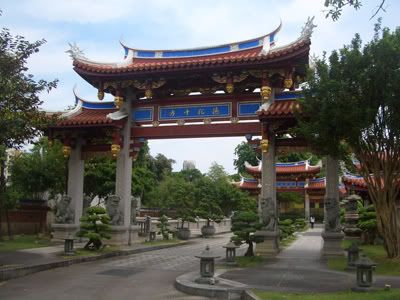
One of the side gates to the temple.

The temple is built based on traditional chinese temple design. Here are the walkways within the temple compound past the gates.
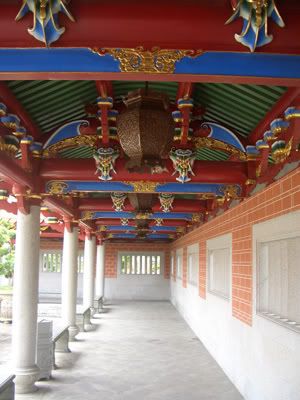
A mega drum. Not sure whether is it used for any special ceremonies.
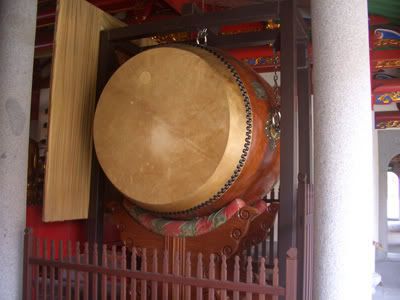
The Main Hall of the temple. It is here where prayer services for the public are conducted each day.

Behind the Main Hall is a beautiful garden. It is here where we take a break in between our meditation sittings (i.e. during our walking meditation period). A stone sculpture with the Bodhisattva of Compassion on it.
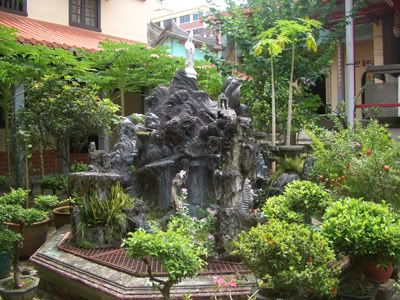
A pavilion where we can rest and just enjoy the nature.
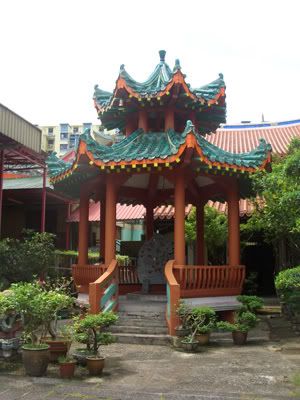
Here is the main meditation hall where we spent up to 9 hours in it each day.
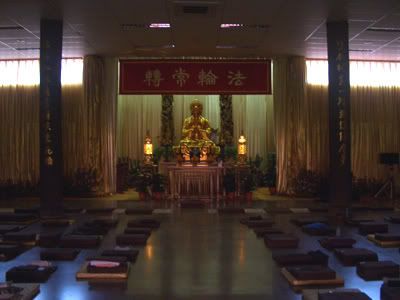
On the first night of our retreat, we were presented with this diagram which show the way to practice. We have to keep the 8 precepts when we are in the retreat. That will fulfill the basic pre-requisite of the diagram (1. Purification of Virtue). Thereafter we start practising our meditation to gain Access Concentration. Our mind will grow stronger and more in control as time goes by. After that will be Absorption Concentration where practitioners will be able to reach the higher concentration levels. There is one male yogi which we know of which has reached the Jhana stages. He is one happy guy, absorbed in the bliss of meditation and inner peace.
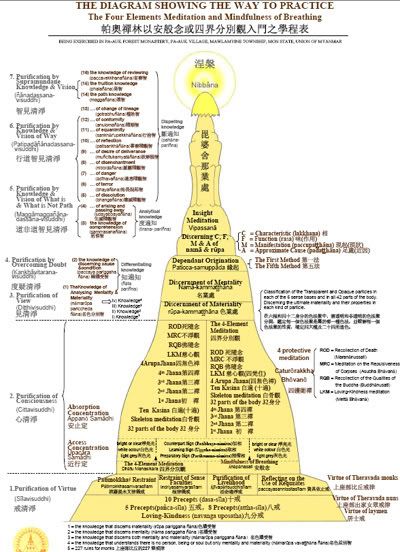
The main conducting venerable for the retreat is Sayadaw Pa Auk himself. He is assisted by 3 other venerables. When he arrived to the main hall on the first day of the retreat, it is really an impressive sight. He is leading the way follow by 8 other monks following him. Their movements were graceful and calm. It is really captivating.
Here is how our rooms look like. There are 6 double-deck beds in each room. In our group, there are only 5 guys, so each of us is able to occupy a double-deck bed.
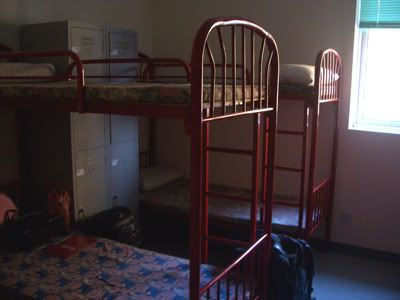
Here is the view from our male dormitory which overlooks the temple compound.
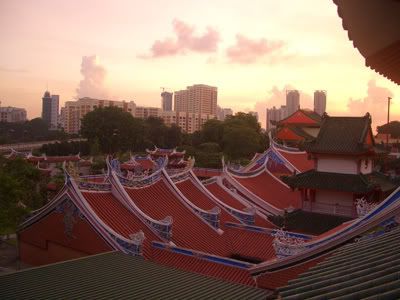
Directly in front of the male dormitory is the Shuang Lin Temple Pagoda. There are bells on the pagoda which rings when the wind blows. The sounds are very enchanting.
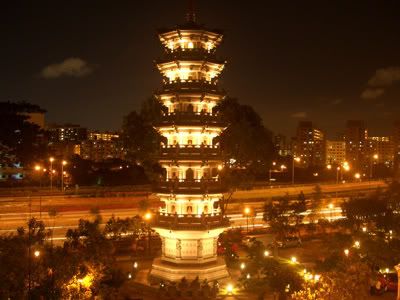
Each night when we finish our last meditation sitting or Dharma Talk, we will walk down this lantern-lighted passageway to our rooms.
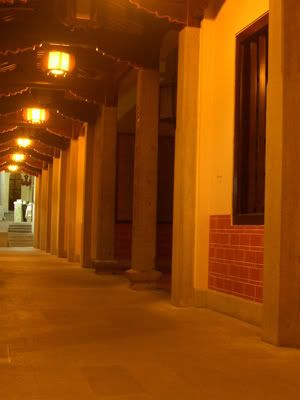
I saw Stanley (our group leader) taking a photo of the Bonsai on the last day. So I decide to just follow along. It looks really nice. These bonsai lined up the passageway to our meal areas.
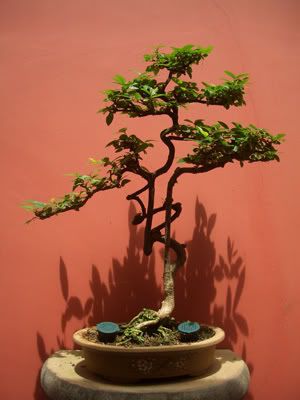
Ok. We have to observe Noble Silence. (But we didn't observe it strictly)
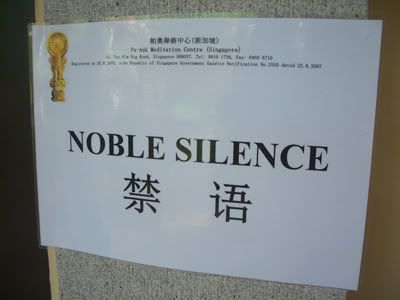
Here is our group photo. From left we have Stanley (Group Leader), Nai, Thomas, Daimon and me. Somewhere towards the last 3 days, we started our sharing session in our room. It is like the Dharma Circles we have back in University. Except this time round, there are several experts in the group.
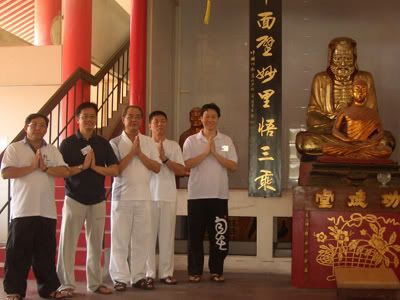
Thomas is especially good with Buddhism. I keep remembering him saying that when we speak, it has to be True, Correct, Beneficial, Welcoming, etc. It is mentioned in the Sutra somewhere and these are the qualities of a Buddha. On the last day he was explaining what validate the precepts of killing to Nai. He really knows the 5 attributes that constitute a 100% killing action. Then there is Stanley who happily share with us the stories of the Buddha and his disciples on our second last night. Daimon is the most hardworking in our group. His knowledge of Buddhism and the Dharma is also very good. This is the first time in a retreat session that I have made such good meditation buddies. I guess it is through these evening sharing sessions that we understand the difficulties we face in our sittings and the joy of learning the Buddha Dharma.
As we started on our retreat, there is a getting used to period which I have observed each day:
Day 1: Most yogis will feel sleepy as we have to wake early
Day 2: The pain from sitting over long hours will start coming in
Day 3: Time to start observing all the random thoughts appearing in our mind
Day 4: A small stablization may be achieved
Day 5: Either our meditation practice will improve or we will feel it is going nowhere
Day 6: We will feel our concentration have strengthen
Day 7: Time to leave (most yogis will wish to continue staying at this time)
Thus the majority of yogis actually stay 2 to 3 weeks. But for those who stayed a week, a difference will definitely be felt once we return back to society.
The moment we step out of the temple grounds, I feel that Singapore is really quite a busy and noisy city. Cars everywhere on the road and everyone is in a hurry.
There will also be realization for some on our endless pursuit of things in life. It can be pursuit of material wealth, career success, relationships and so on. Sometimes it is good to stop and take a look at our pursuit and re-evaluate ourselves. Throughout these 7 days, we just live simply; eat 2 simple meals a day, doing minimal activity, dress austerely and sleep easily. There are much happiness to be derive from these simple actions that we didn't realise. Even just observing our breathe, a simple method that can bring great inner bliss and peace to ourselves.
When I am down in Orchard a day later, I observed my fellow Singaporeans rushing from one place to another. It really feels like Matrix the movie. There are many who are lost in their pursuit, driven by their desires, anger or delusion. While there are few who stopped and observed, understanding joy through simpler means.


